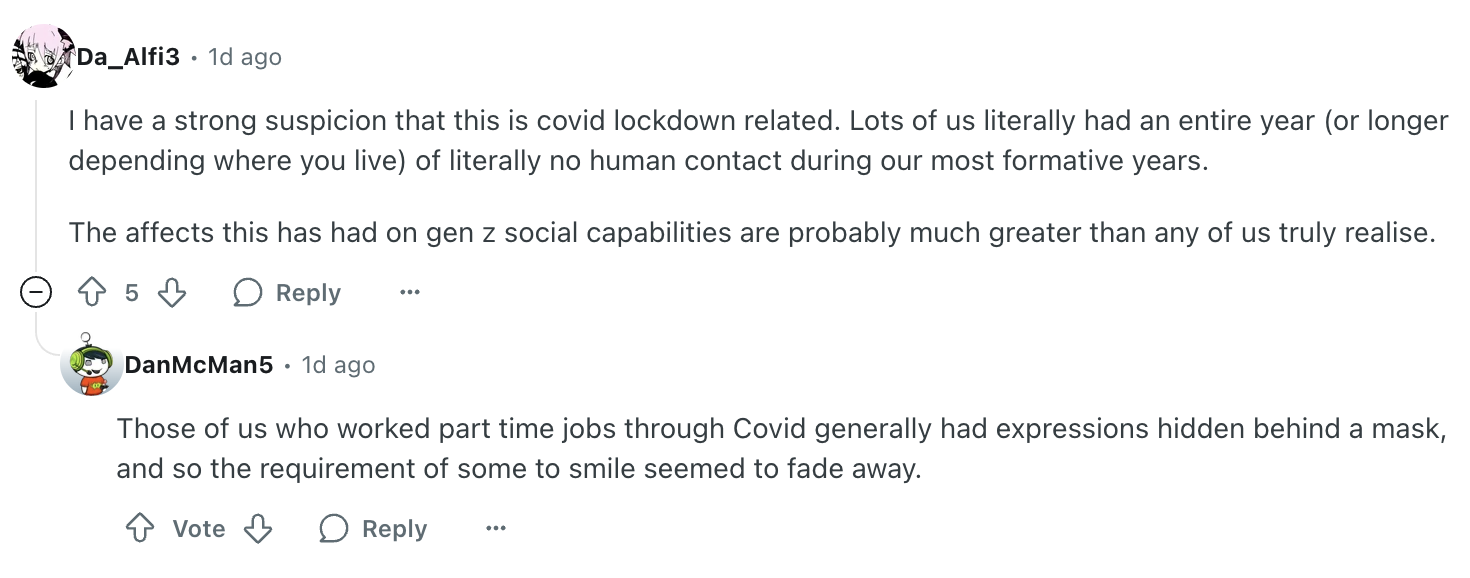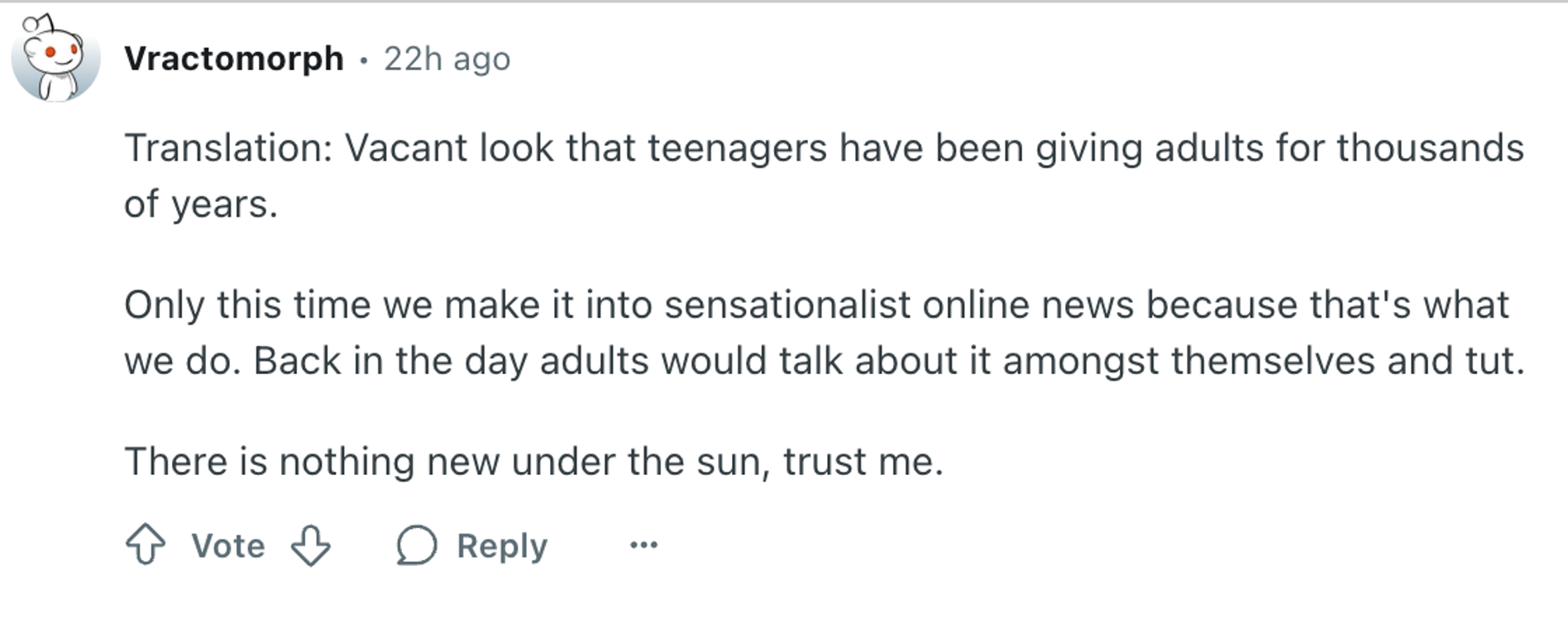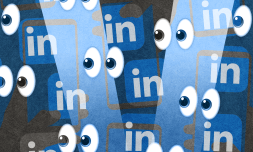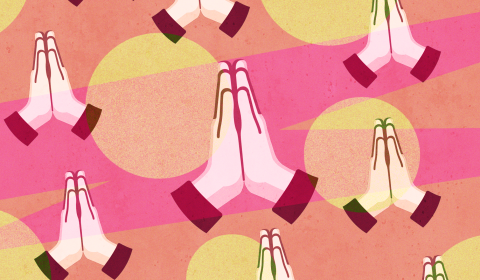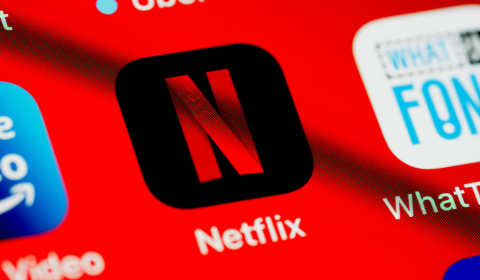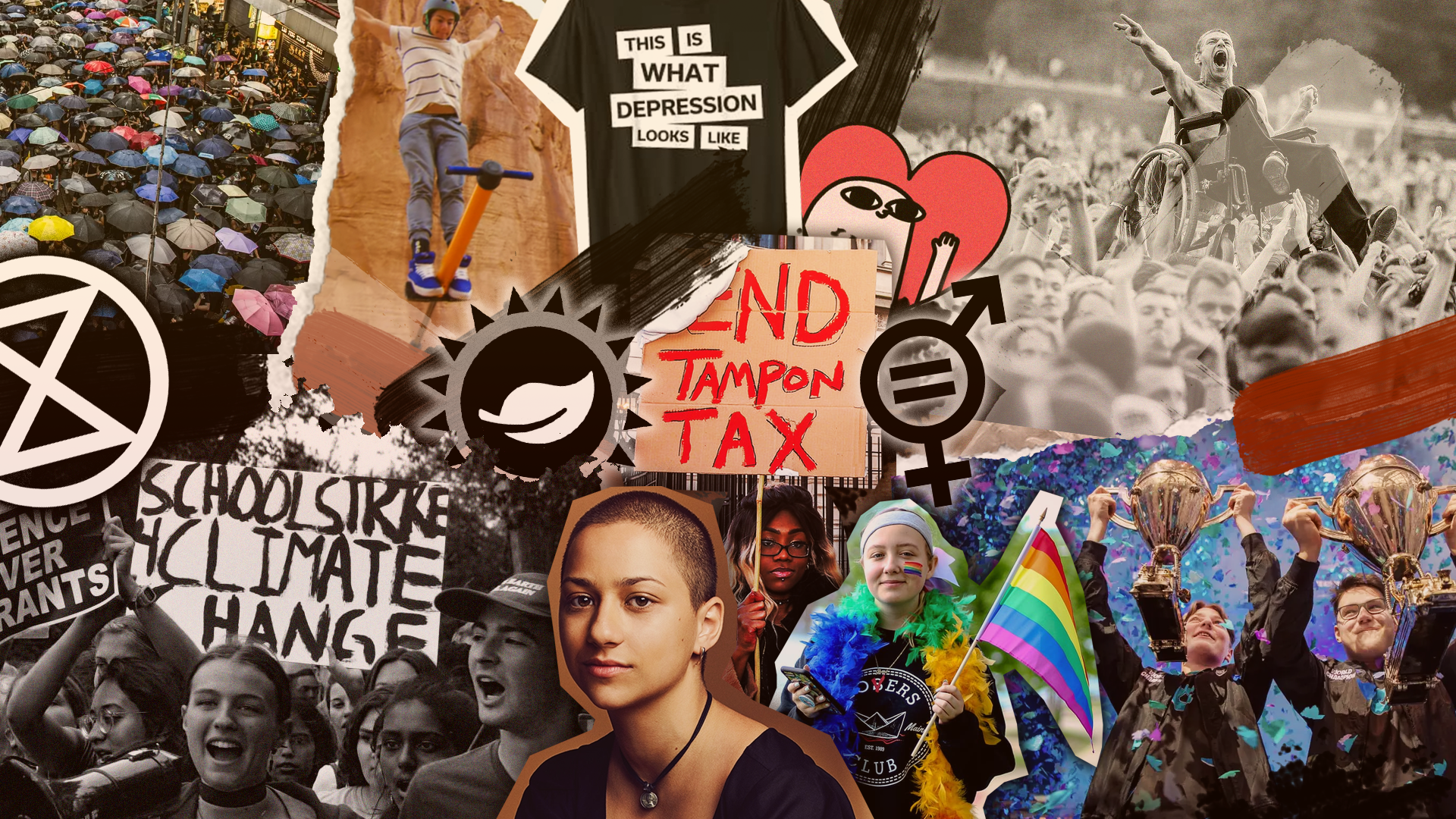Millennial TikTok users are taking to the platform to express their grievances about the conversation-halting deadpan look they receive while interacting with young people. Is this a real thing, and if so, what does it mean?
It’s just another day on TikTok, and young people are being dragged for their apparent ‘lack of social skills’.
Millennials are calling out what they’ve dubbed the ‘Gen Z stare’ – the blank faced, deer-in-headlights look and blunt responses they receive while engaged in what are supposed to be normal, everyday interactions with young people.
The first to go viral for raising this behavior is TikTok user Riley Despot, who experienced the Gen Z stare while chatting to her daughter’s golf instructor.
Despot described enthusiastically thanking the instructor and asking clear questions about payment, only to be met with long pauses, a lack of eye contact, and vague one-word responses. She said the interaction left her ‘so confused,’ while taking care not to vilify all of Gen Z or paint them all with the same brush.
With thousands of others chiming in to say they’ve had similar experiences, it’s worth asking where this behaviour stems from and what – if anything – it means.
@rileysomsendespot I received the Gen Z Stare the other day. I walked away from the interaction so confused. I am against slamming a generation as a whole, because I know this isn’t all of Gen Z. The interaction was just weird, you know? #genzstare #fyp #millennial
When attempting to explain the Gen Z stare, the low hanging fruit is obviously an overuse and over-reliance on technology.
Young people are often championed for being digital natives, having spent their formative years in front of many different screens. They know the ins and outs of all the latest tech, and adapting to new features on digital platforms is basically second-nature.
But all this time interacting with other people online instead of in-person might be taking its toll.
Even for social butterflies, making eye contact and small talk can be difficult sometimes, especially when it’s with a total stranger. If Gen Z has most of their conversations through a screen or with people they know, then being engaging and expressive while face-to-face with someone they don’t know isn’t going to come easily.
One Reddit user describes their experience of the Gen Z stare in public. ‘I was at Home Depot buying paint for a wall in my house I was fixing, and the kid [who worked there] was having a conversation with his buddy. I asked him for help and just got back the stare for like 5 seconds. Glad it’s not just me.’
Compassionate responses describe this stare as ‘buffering’. In other words, a conscious pause that grants the person a moment to understand what’s being asked of them, even if they know it comes across as a little abnormal.
There is, however, another point worth considering, which is that Gen Z may simply struggle to socialize. After all, they lost a few key social years to Covid-19.
